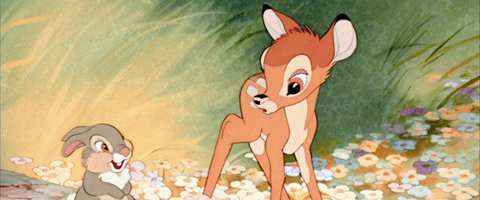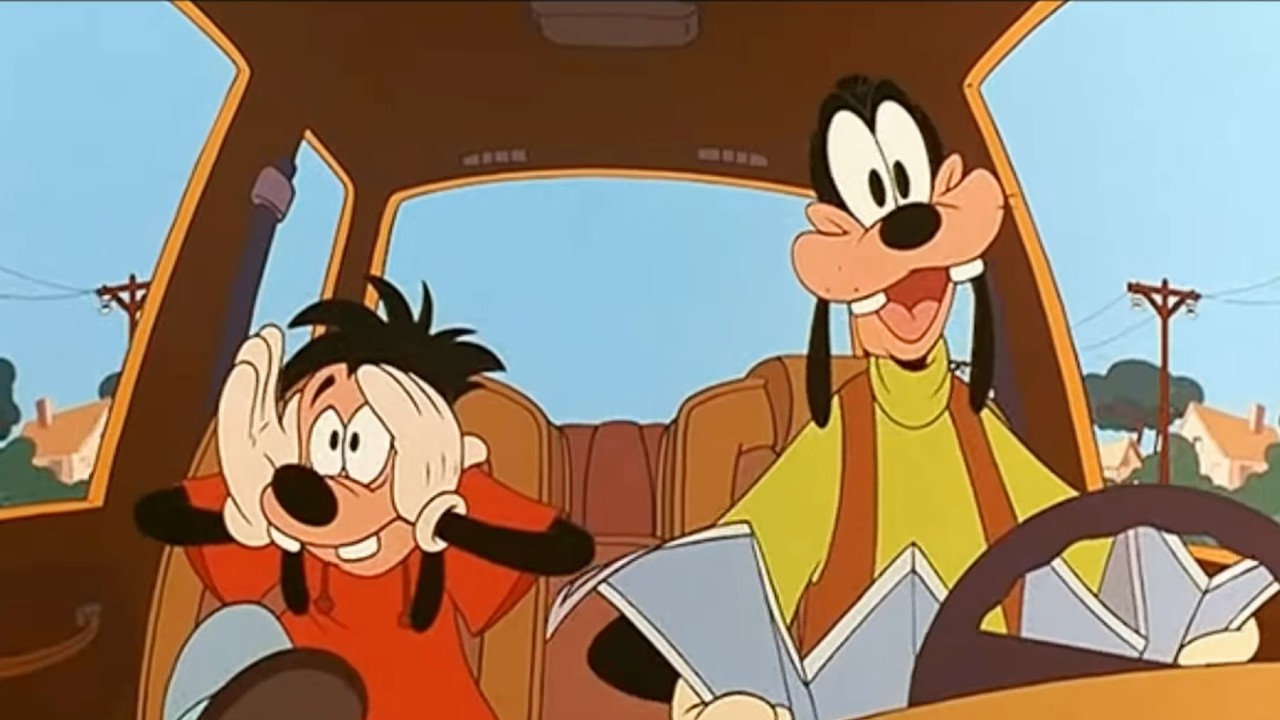Bambi has a history of getting a bad rap. It isn’t dialogue oriented, so parents have little patience for it. By the time kids are in kindergarten, they nearly never return to the story. Beyond that, there’s a creepy owl in the first 10 minutes and it’s hard to tell until late in the film if Flower is a boy or girl. Even back in 1942, Bambi was a box office flop. Today, Bambi gets placed on the mainstream back burner. Some see the animation as aged, and others often believe Disney’s heyday came from '89 - '94 when such fare as Beauty and the Beast, Aladdin, and The Lion King were created. Bambi gets a bad rap because it is hard to remember Walt Disney’s animation golden age lasted from '37 into the '40s, when he created films using ingenious and complicated methods. It is easy to forget that Bambi was an incredibly animated film, and has held up relatively well because of this. Bambi is the story of the young life of a deer. In the film’s opening scene, many creatures in the forest appear to witness Bambi as a newborn. It is here we see our protagonist get up right away, an action reminiscent of this year’s Secretariat, and a reminder that even Disney is not immune to recycling. Bambi begins to spend his days with his mother, meeting new friends like Thumper and Flower in the forest. Just after he tackles snow for the first time, Bambi is faced with the loss of his mother. It’s an early lesson in death and dying and, while not as poignant or distressing as the similar scene in The Lion King, it is perfectly suited to the film.
Bambi never lingers on death. Cut to the spring, when all is well and Bambi, Flower, and Thumper have become “twitterpated.” At first Bambi is a bit sad, because his two friends find a mate before he does. Then, Bambi meets a young doe named Faline, they fall in love, and some action goes down. Through this action, Bambi must face himself and find his strengths. By doing this, he is able to grow into an adult in a way that allows the film to keep going for another 20 minutes without devolving into silliness.
Bambi is a film that says a lot without words. The images are lovely, if not simplistic, views of life in the forest. These visions are set to a soundtrack that can play fanciful, terrific, or enthralling if the occasion arises. Bambi was my favorite film from the time I could talk to age four, and I think it’s because the material is best suited for very young children.
Bambi is about growth, and learning -- to speak, to walk, to care for other creatures. Bambi can stutter out, “Flower…pretty flower,” and it is just another reminder of the daily issues young children deal with. This doesn’t mean the film lacks depth; in fact, there is a lot to learn from the recognition of early lessons. Even when Bambi and friends grow older and start to think about love, it’s still a level 1 love lesson, without complications, but the lesson is sweet and honorable. Bambi might actually be the only acclaimed mainstream film really developed for a super-young social demographic (and probably why animators cut out the shot of a human corpse present in an early draft). This is a genius idea.
Before this discussion becomes too psychological, let’s talk about Bambi himself. Bambi’s kind of unlikeable. He’s strong and true, but his lack of faults makes him pretty unrealistic. Bambi’s the mental equivalent of a kid, and anyone with kids knows they certainly have some faults. Bambi is also a deer, and this makes him way more irritating because of an ingrained human hate toward the species. Deer are stupid. Not as stupid as opossums, but stupid. It’s easy to spend the entire film wondering if Bambi will run into the middle of a road. Bambi is a weak spot in an otherwise well-animated and put-together film, but if Disney had made him a predator or a rabbit, etc., this film would have had an entirely different outlook.
Hate of Bambi should not keep you from the real jerky of this argument: Bambi may not be the greatest Disney story to ever hit the market, but it is good, and probably worthy of your collection. Its animation ranks among the greatest of all time and can be appreciated by anyone. If you look at it anew, there really are a lot of good things to say about Bambi. Anyway, if you can’t say something nice about it, don’t say anything at all. When you put in the disc, there is an option to play the film with a short intro by Diane Disney Miller. This wouldn’t be something I would expect audiences to repeat, but just like Michael Eisner did the introduction to ABC’s Disney movie nights, it’s nice as a once 'n' a while pre-movie option.
The picture is incredible. They kept a lot of the background stills nearly the same, but enhanced the moving characters. The scenes where Bambi looks for his late mother in the snow are especially impressive. The VHS quality of the film was always hazy, the DVD quality was better, but the Blu-Ray is awesome.
There is a "recommended" feature called “The Big Book of Knowledge.” In this interactive book, you go through the seasons, learning about life in the forest during various points in the year. The entire segment is narrated by an owl character, and the voiceover is creepy. In each of the seasons, there are interactive games and activities geared towards kids. Kids need to be good at wielding a remote to do these activities, otherwise you will need to help them. If you do well in the activity, you earn a virtual sticker. At the end you get to place all of the virtual stickers you’ve collected onto pages of a virtual sticker book. This is extremely fun.
Bambi: Diamond Edition also contains all of the features included with the original DVD release. You’ll still get more with the Blu-Ray, but it is nice to know you won’t be losing anything by upgrading. These features include an original theatrical trailer and “The Making of Bambi” segment. If you are a super-huge fan of the animation in Bambi and did not watch the “Making of” segment with the DVD release, check it out. It’s a little long, but it is well put together, so there should be no problems getting through it.
Lastly, there are deleted scenes and a deleted song. They seem to be the sort of extras that were tacked on just because the information was available. This is the big problem with Disney -- sometimes they want things to be so great that they over-invest. Then again, that’s why they also have certain features that are unmatched on other Blu-Ray and DVD releases. It’s all about what you are into.











